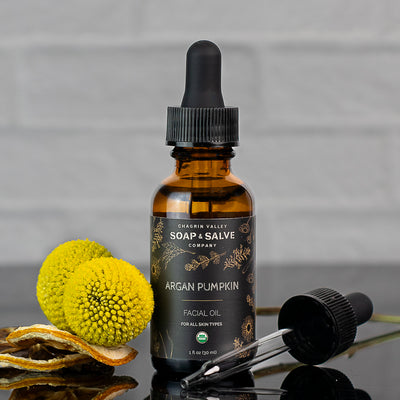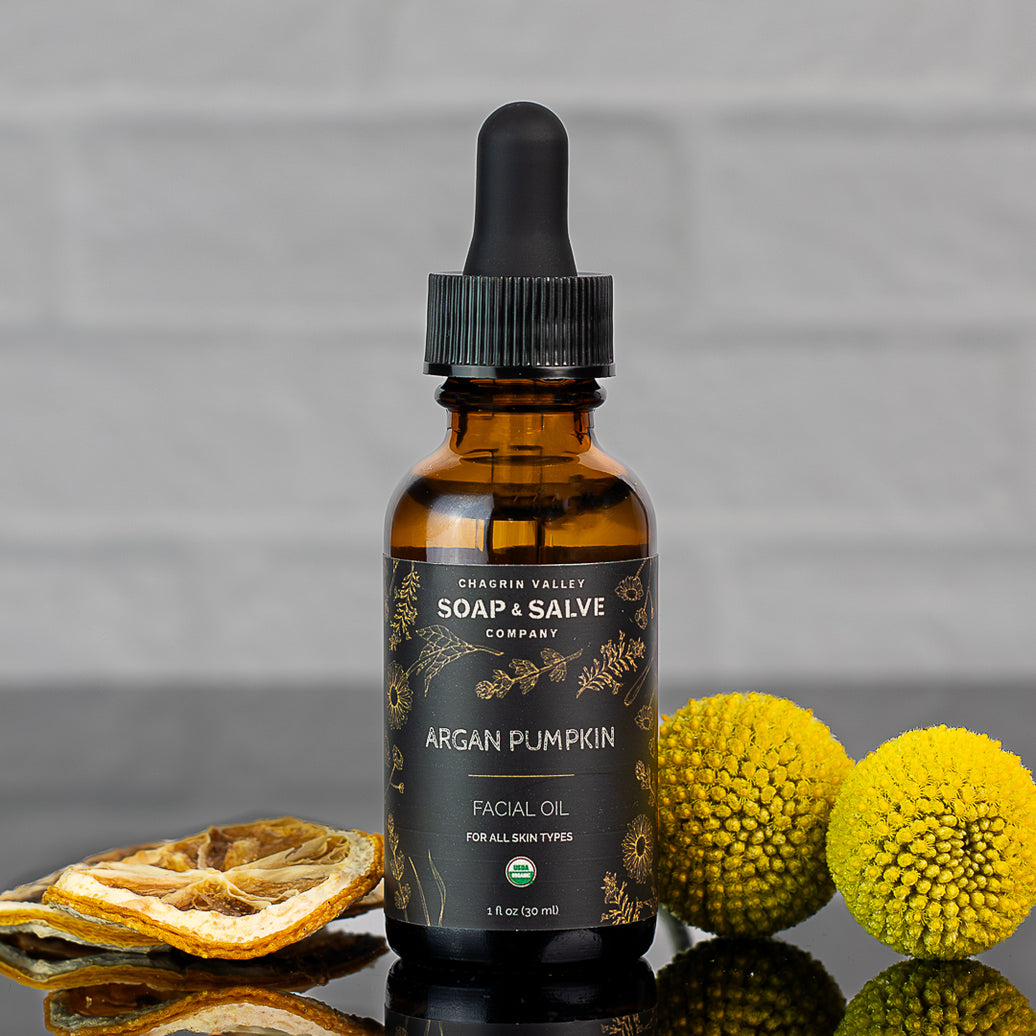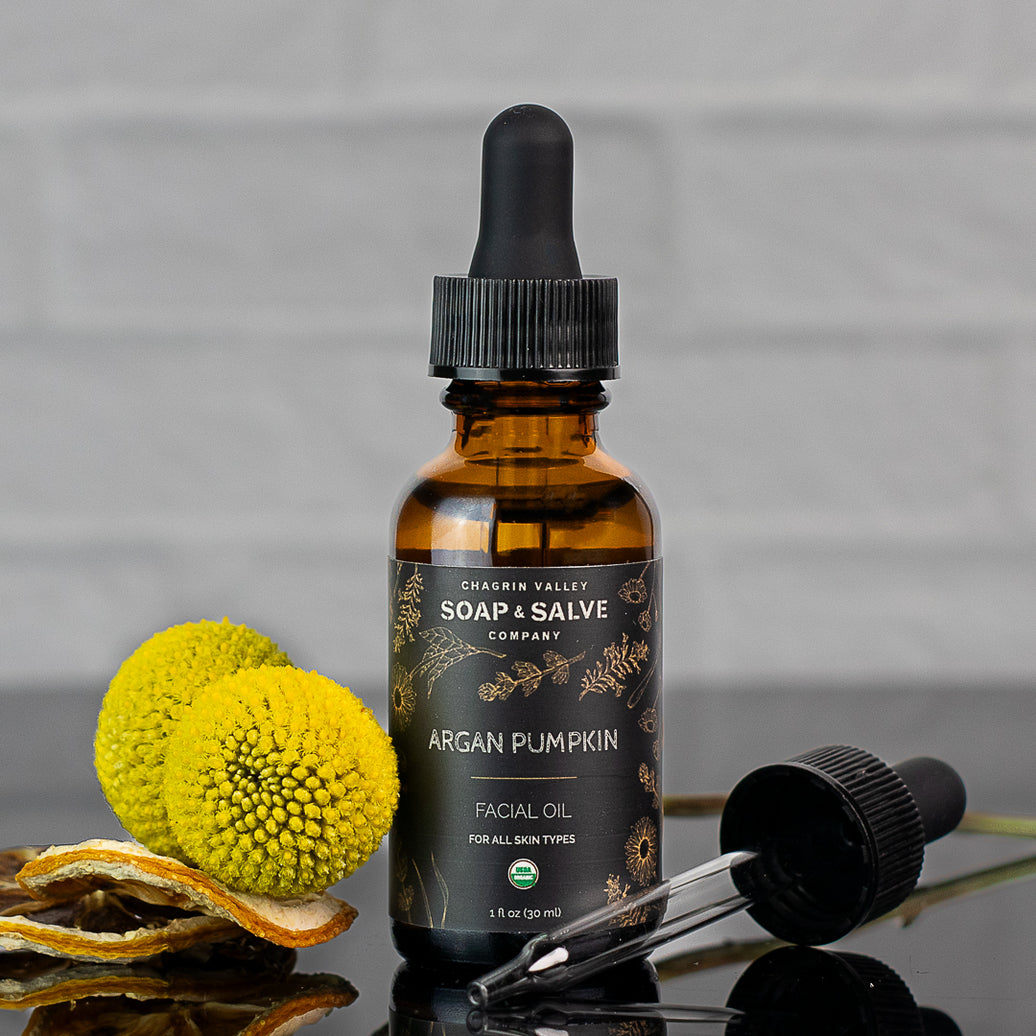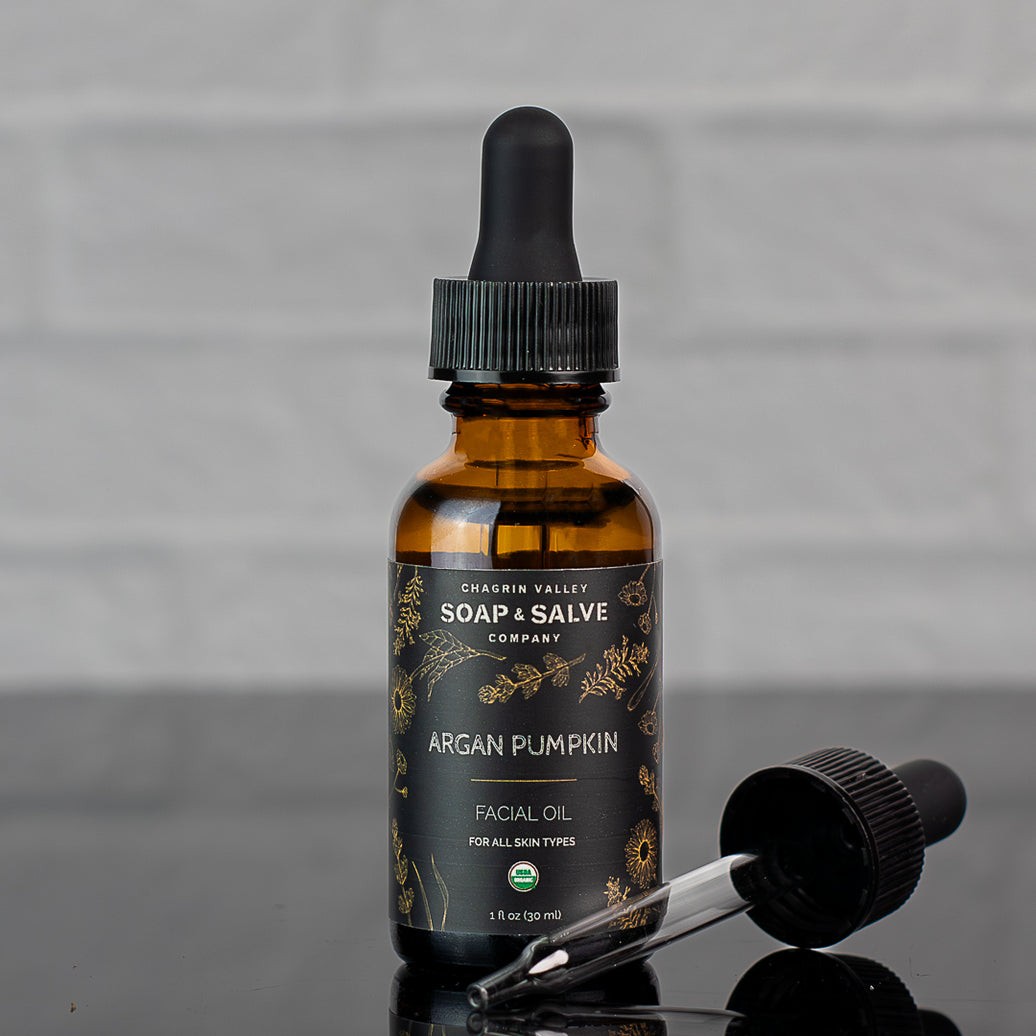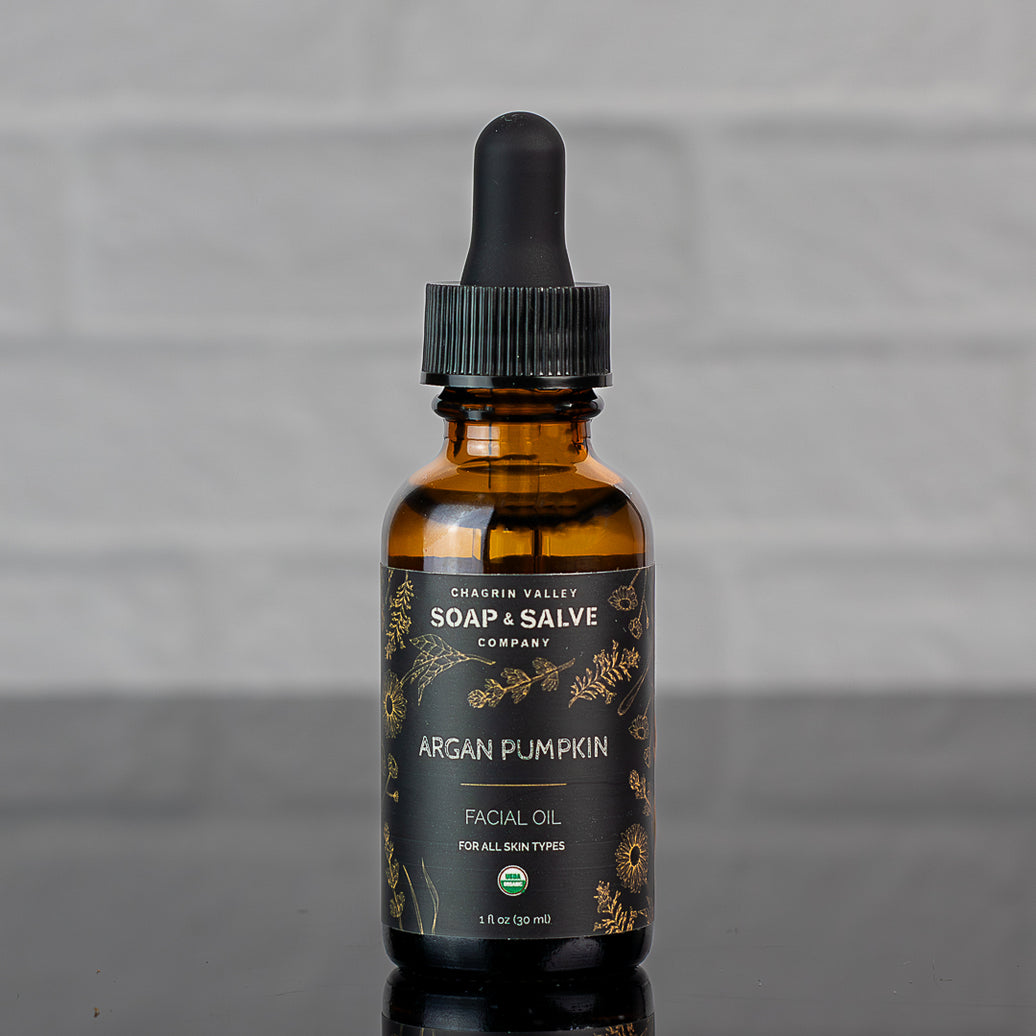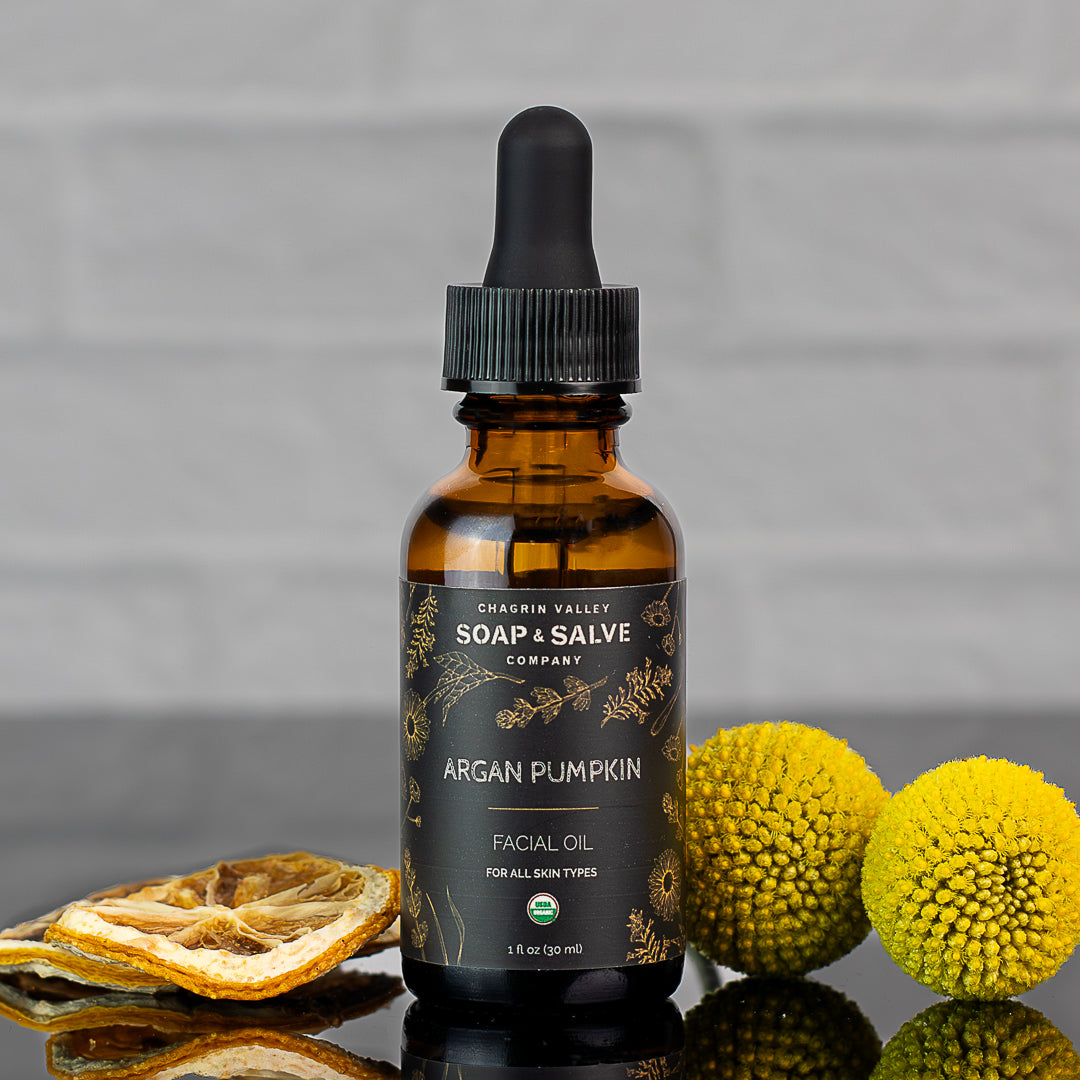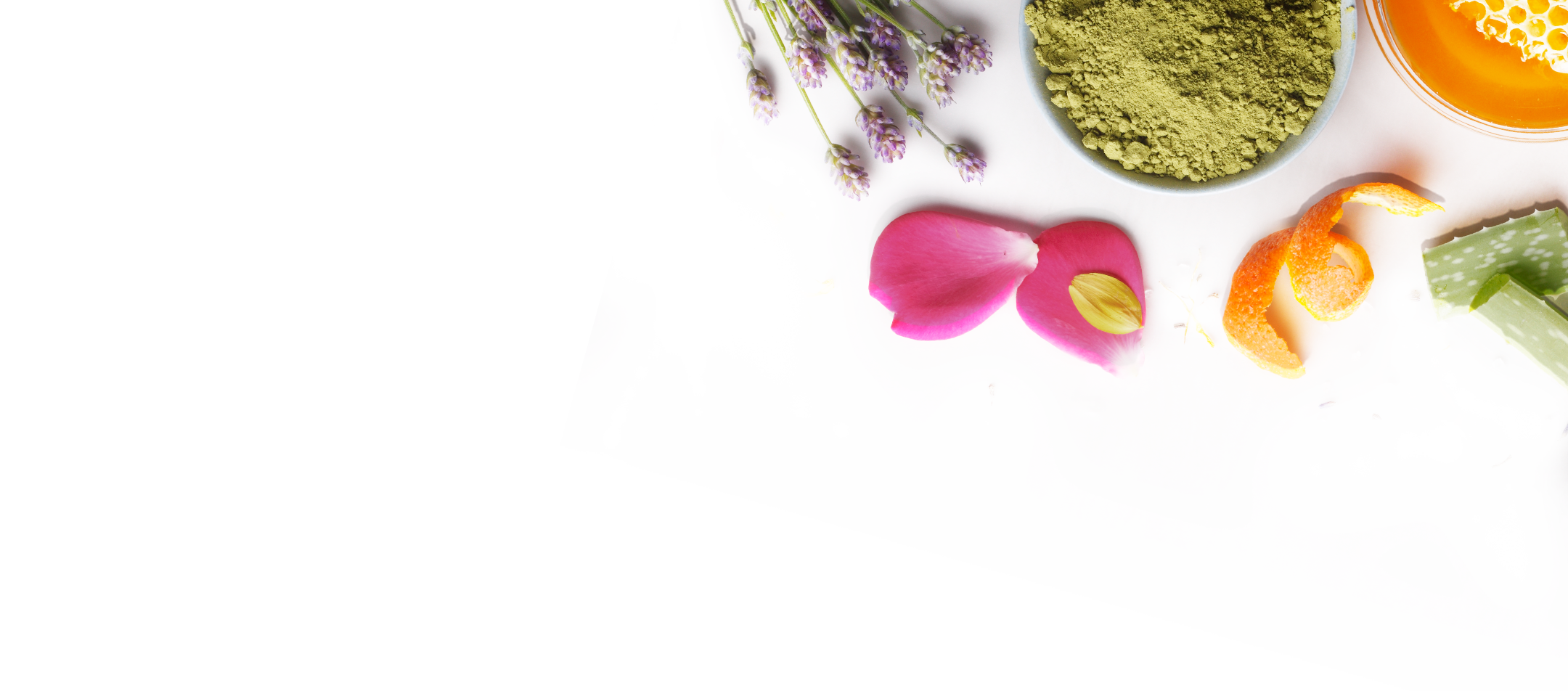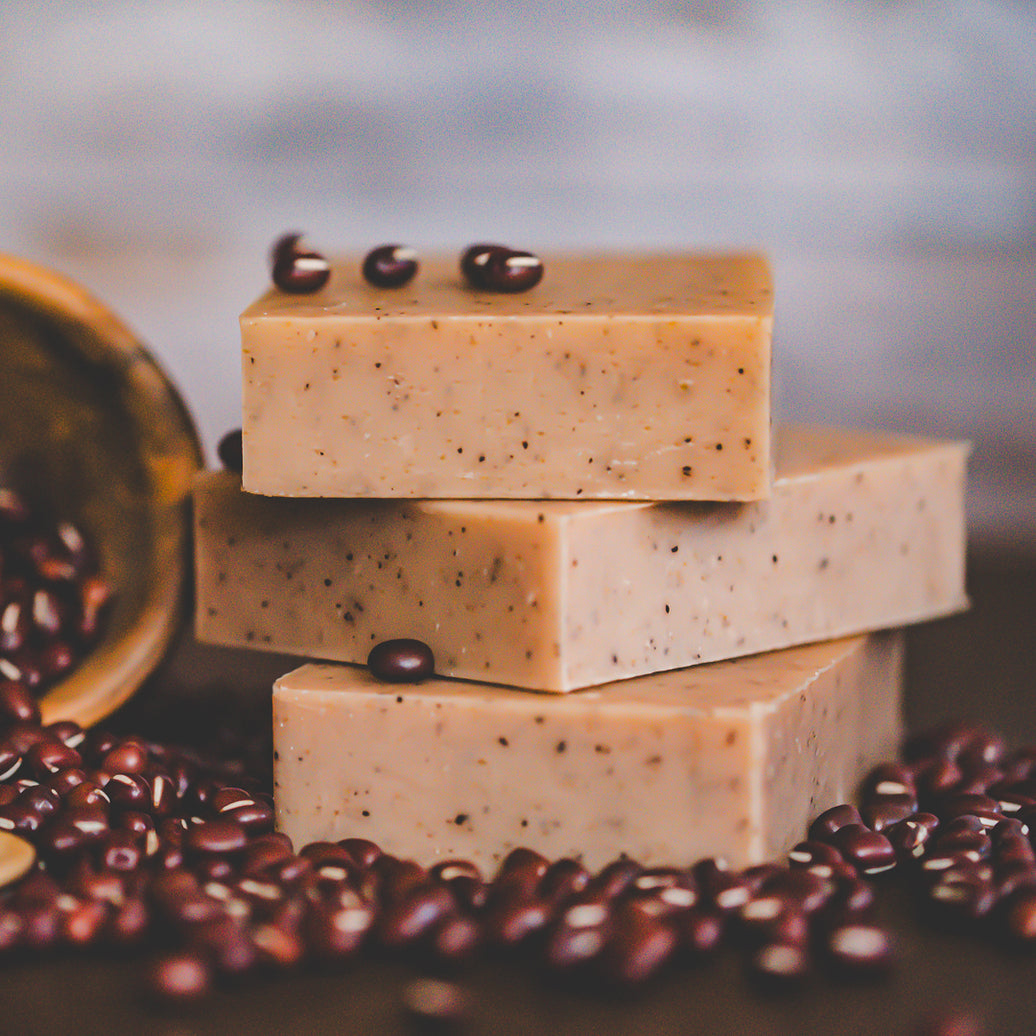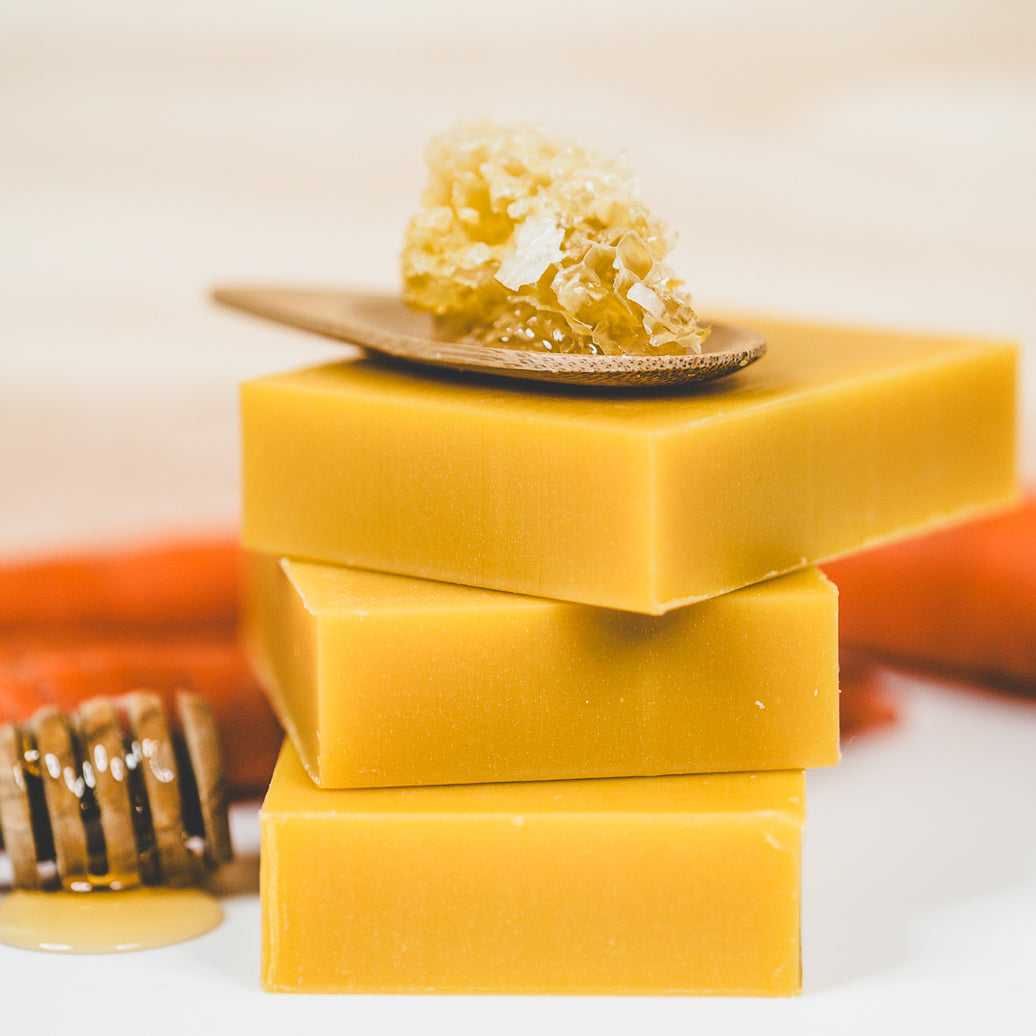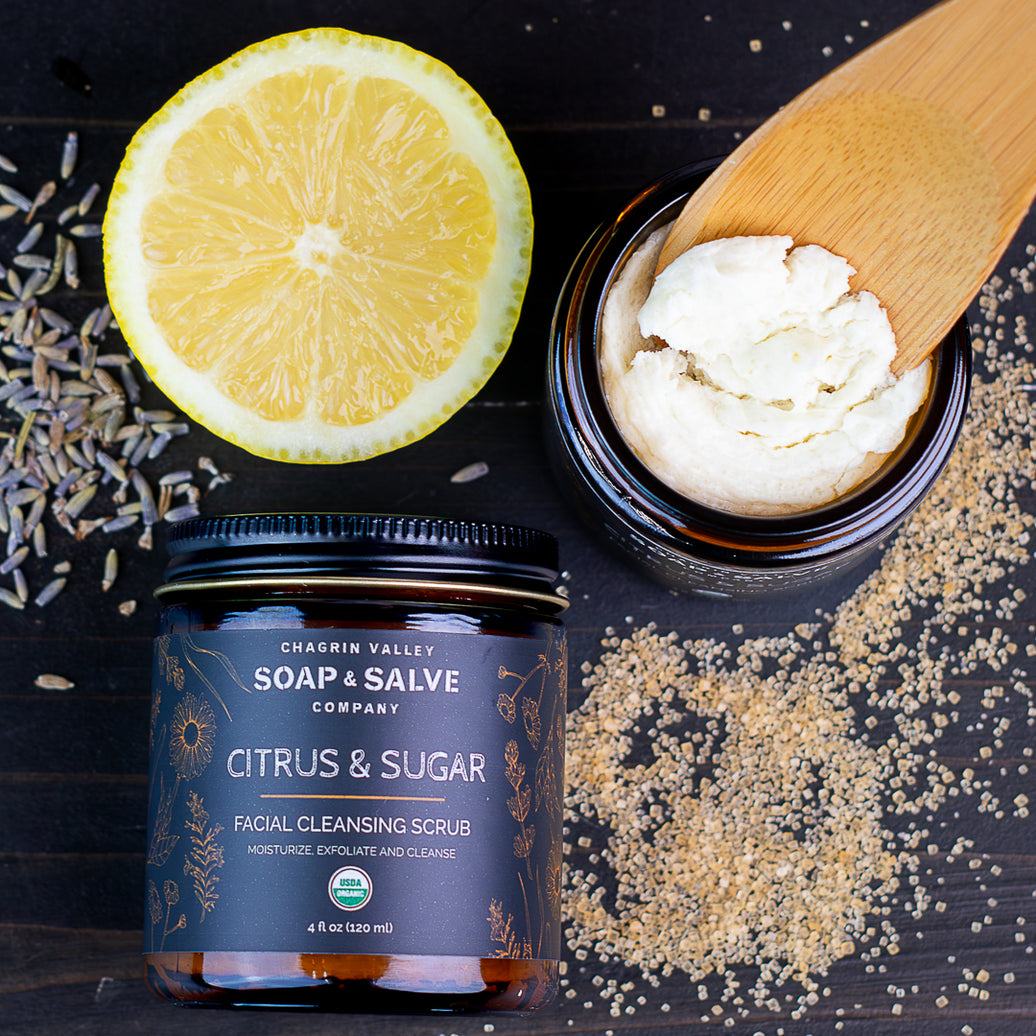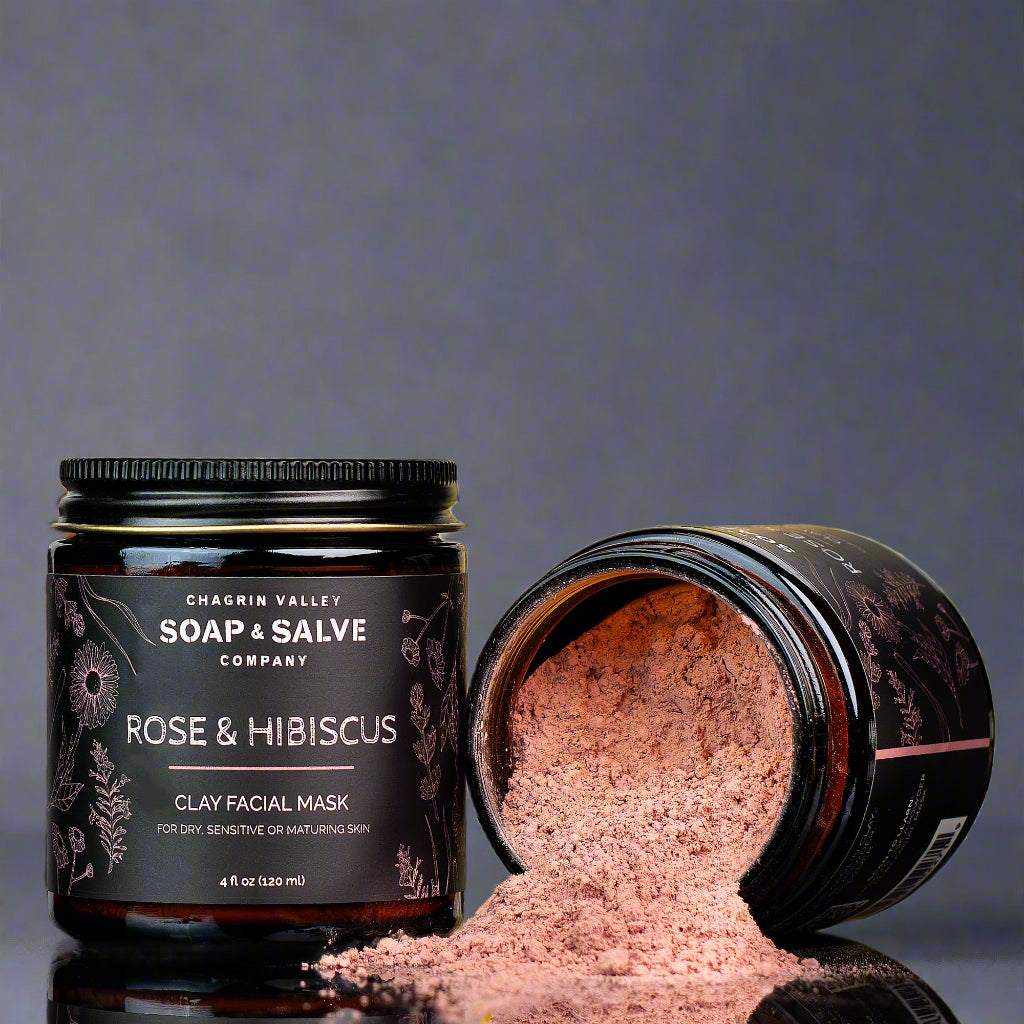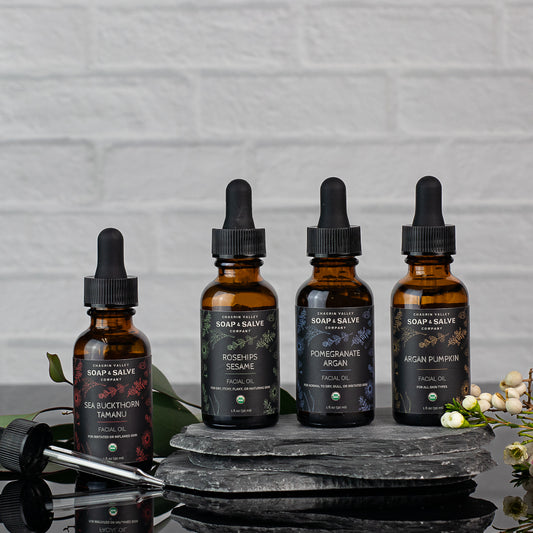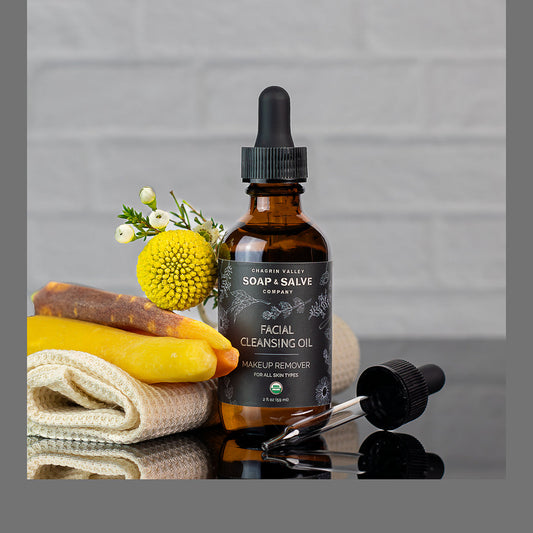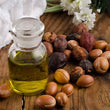
Facial Oil: Argan Pumpkin
Facial Oil: Argan Pumpkin
Deeply nourishing oils like Argan, Pumpkin Seed, Jojoba, and botanical-infused Sunflower, help restore a healthy balance to normal or oily skin by regulating natural oil production.
- Out Of Stock






Product Overview
Good For: All Skin Types
Our lightest face oil, the Argan Pumpkin is great for skin that is sometimes shiny and sometimes needs moisture, thus needs help balancing oil production.
Proper hydration is key to retaining a healthy glow. The most basic function of a facial oil is to hydrate and soften the skin by preventing water loss.
People with oily skin are often told to use oil-free moisturizers with harsh ingredients in an attempt to get rid of oily shine. Harsh ingredients can strip the skin of its natural oils which triggers the skin to overcompensate by producing even more oil creating a vicious cycle. A wholesome face oil can actually help balance skin oil production.
This luxurious blend of unrefined organic oils and soothing botanicals is formulated for all skin types.
Argan Oil is prized for its ability to improve the quality of skin. Rich in vitamin E, natural squalene, phytosterols and essential fatty acids, it can help reduce the appearance of wrinkles and fine lines. It contains natural anti-inflammatory agents that help calm inflamed skin and sebum regulating properties that help reduce the appearance of blemishes.
Pumpkin Seed Oil is a highly nourishing and emollient oil rich in vitamin E, a powerful antioxidant. Rich in essential fatty acids that regulate skin oil (sebum) production, it is great for both oily/acne-prone skin and dry damaged skin. It helps combat fine facial lines and may be helpful for inflamed skin.
Tamanu Oil is readily absorbed into the skin, helps improve the appearance of scars, and encourages healthy skin growth to aid in healing skin conditions. Tamanu oil is a remarkable topical healing agent with skin healing, antineuralgic, anti-inflammatory, antimicrobial, antibiotic, and antioxidant properties. The oil has been well researched, and the evidence of its ability to heal damaged skin is quite impressive. Tamanu is a costly oil. It takes 20 pounds of Tamanu fruit, the amount that one tree produces annually, to yield just ONE pound of oil!
Jojoba Oil closely resembles our own skin sebum and is considered nature's most effective natural moisturizer. It is so great for balancing oil production that it actually helps your skin find its own natural balance. It penetrates the skin easily, has anti-inflammatory actions, and can be used on oily and acne-prone skin. It is great for maturing skin and is gentle enough for sensitive skin.
Sunflower Oil, one of the most moisturizing vegetable oils, is easily absorbed and can be used on all skin types. It is rich in essential fatty acids and vitamin E making it especially helpful for dry or delicate skin. Its low comedogenic score means that it is less likely to block pores which could lead to blemishes.
The sunflower oil we use in our Argan Pumpkin Face Oil is infused with soothing and healing organic botanicals.
All Natural, Certified Organic, Vegan, Cruelty-Free, Non-GMO
Why should you use a facial oil? Scroll down a bit and read the FAQ to the right!
Packaged in a 1 oz. recyclable glass bottle with a glass pipette dropper.
How To Use
The Best Way to Apply a Face Oil
Less is More
For those who have tried facial oils but do not like them, often an incorrect application method is the problem. Since facial oils are very concentrated, a little goes a very long way and less is usually better than more.
If your skin feels oily hours after application, you should reconsider your technique.
Can a face oil replace your moisturizer? For some yes, but for others maybe not. If you have very dry or maturing skin a face oil alone may not contain enough of the "heavier" ingredients found in an organic oil-based moisturizing cream. The two products play different moisturizing roles and support each other.
For my 70 year old facial skin, a face oil alone is enough during summer months but not during the drying winters. If you are going to use both, apply the facial oil first and allow a few minutes for it to absorb before apply your face cream.
Is Your Face Ready?
The best way to apply facial moisturizers is on freshly cleaned, warm and damp (not wet) skin. Clean skin allows oils to better penetrate deep layers and stop leftover makeup from clogging pores.
Creams and oils work best with a little damp moisture. Facial oils are better able to lock in moisture when the skin is more pliable after a warm wash and damp skin also ensures that the oils spread evenly and absorb effectively into your skin leading to more hydrated, plumper skin.
Note that your skin should not be wet, just a bit moist, or the skin will be unable to hold the oil. Remember that oil and water do not mix!
How Much to Use
Again, facial oils are very concentrated, so start slowly. The key is to use them sparingly.
The recommended amount for your décolleté, neck, and face is about 4 to 6 drops. If doing your face only, you need about 2 to 3 drops of oil per treatment. If your skin is extra dry a couple more drops may be helpful. Just don’t overdo it. This might appear to be a very small amount but start out small, you can always add more.
Application Technique
Now that your skin is ready you need to choose an application method.
While many people have their own special technique for applying face oil, here are two favorites. Always be sure that your hands are clean and remember to begin with clean, damp skin.
Dropper Method
 We suggest applying our facial oil directly to your skin with the dropper. Placing the oils on your hands first will probably give you soft hands, but you want to get the most benefit for face!
We suggest applying our facial oil directly to your skin with the dropper. Placing the oils on your hands first will probably give you soft hands, but you want to get the most benefit for face!
While it may be called a facial oil, the sensitive skin on your neck is especially prone to signs of aging or dryness.
Begin with only a drop on each cheek, one drop on your neck, one on your décolleté, and one on your forehead, focusing on problem areas (remember you can always add more if needed).
If you choose to do your face only, place one drop on each cheek and one on your forehead. If you have an oily T-zone, but dry flaky cheeks, limit your facial oil application to dry problem areas only.
Patting the oil onto the skin with your fingertips is often thought to be more effective than rubbing the oils into your skin. Patting can aid in oil absorption and nourish deeper skin layers. But using a gentle "rub" in sections will also work, especially if time is a factor.
EYES: Take extra care around the eye area since rubbing or pulling that delicate skin may help encourage those annoying eye wrinkles. My eye technique:
- I place less than pea-sized amount of oil on my left ring finger to use a my "dipping pot".
- Then I use the ring finger from the other hand to dab small amounts of oil gently around the eyes.
- Using a dabbing motion, I gently smooth the oil into the skin, beginning at the inner corner of the eye to the outer corner of the eye.
When applying moisturizer to your neck or décolleté, massage in an upward soft stroking motion, until completely absorbed.
A face oil is a great product to use with facial massage. Using small circular strokes in an upward, outward motion, massage slowly and gently with your oily fingertips until most of the oil has been absorbed. The gentle massage will also give your skin a nice circulation boost and can help with lymphatic drainage.
TIPS:
- Any oil left on your fingers can be used anywhere that needs some extra TLC, like the ends of your hair or your cuticles.
- If your skin is very dry it may need an additional application during the day. We suggest taking a tiny spray bottle filled with clean water to give your face a quick mist before reapplying.
Palm Method
While your skin is still slightly damp, place a few drops of face oil in the palm of one hand and then warm the oil by gently rubbing the palms of your hands together. Then press both your palms onto your face with firm but gentle pressure and hold for a few seconds. Then gently massage until it feels absorbed. Some believe that this warming process helps to better activate all the goodness in your oil and enhance absorption.
When To Use a Facial Oil
It is usually suggested that a facial oil be used in the morning. If your skin is extra thirsty, apply the face oil and allow a few minutes for it to absorb. Then use your natural cream moisturizer as usual for extra hydration.
There is a debate as to whether you should apply moisturizers at night. You need to pay attention to YOUR skin!
One school of thought is that you should not moisturize at night. While you sleep skin cells are hard at work naturally repairing, regenerating, balancing oil production, and flushing out impurities.
Applying moisturizers may prevent your skin from breathing, interfere with the skin’s natural regenerative activities, and may cause your skin to become dependent on moisturizers.
The other school of thought is that since cell repair and regeneration is higher at night, skin loses more moisture and needs the extra moisture. Also, since the skin’s ability to absorb ingredients peaks at night, your skin may be able to better absorb the nourishing, moisturizing ingredients.
When applying a face oil at night, we recommend applying the oil at least 20 to 30 minutes before going to bed. The oil needs time to soak into your skin, rather than into your pillow.
If you choose to moisturize day and night, a light facial oil may be better than a heavy cream. Just remember that your skin needs time to breathe. Using too much over time can make your skin lazy. Over moisturizing signals your own sebaceous (oil) glands to slow down natural moisture production, which can result in chronic dry skin.
If you have very sensitive skin or are simply trying a new product for the first time, we always recommend doing a patch test.
For external use only. Discontinue use if irritation occurs. Best if used within 6 months of opening.
For more detailed information about face oils please read our blog, "What are Facial Oils and How to Use Them"
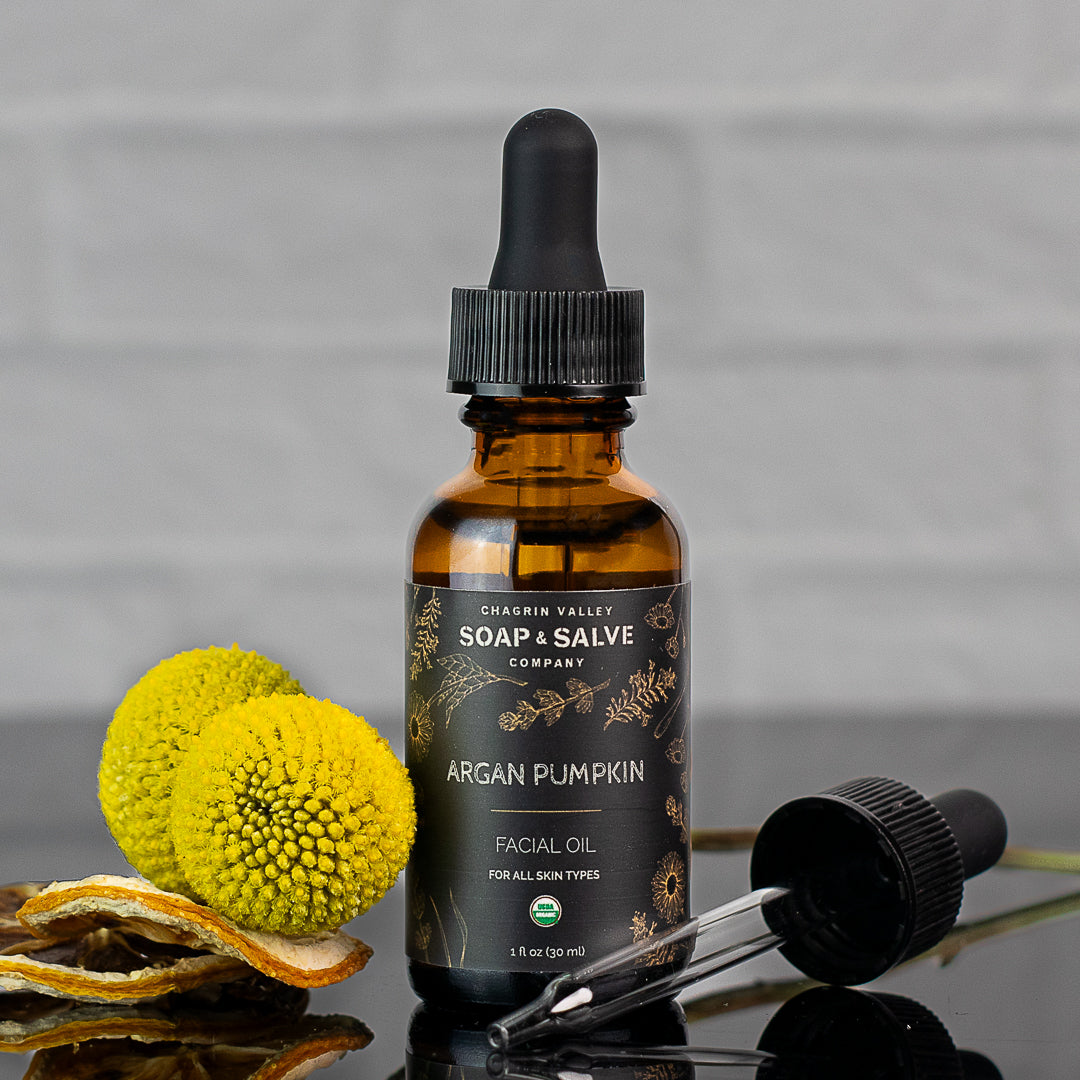
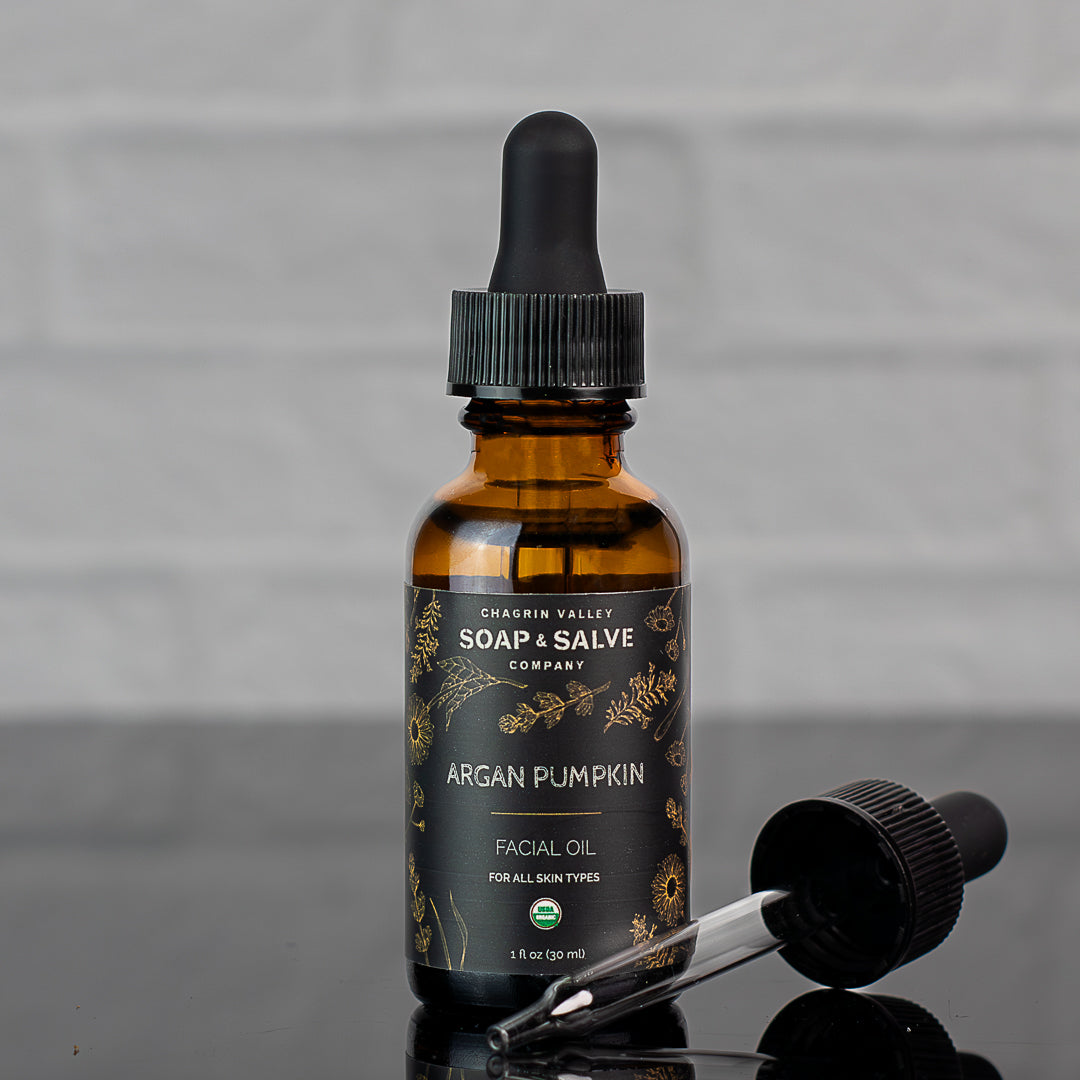
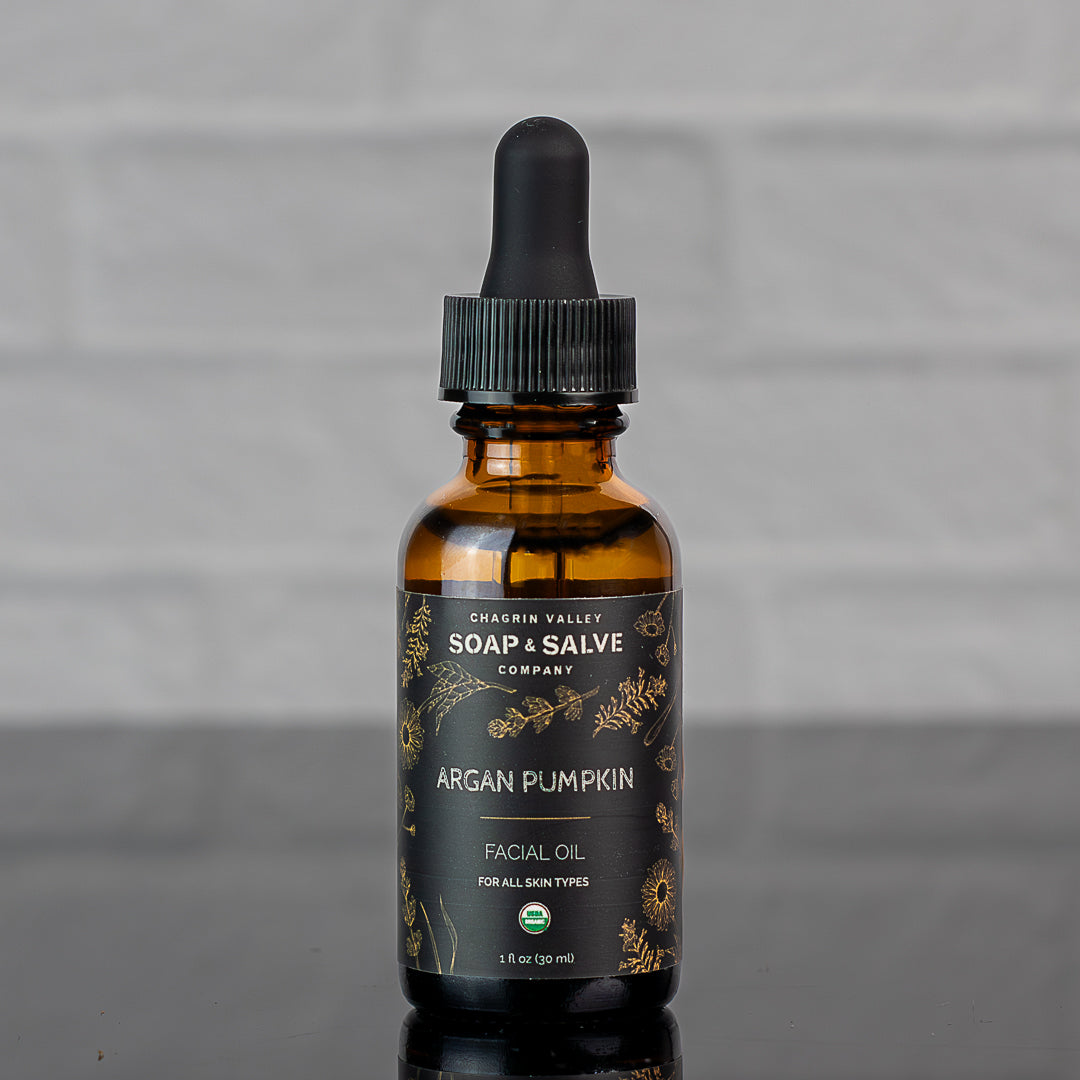
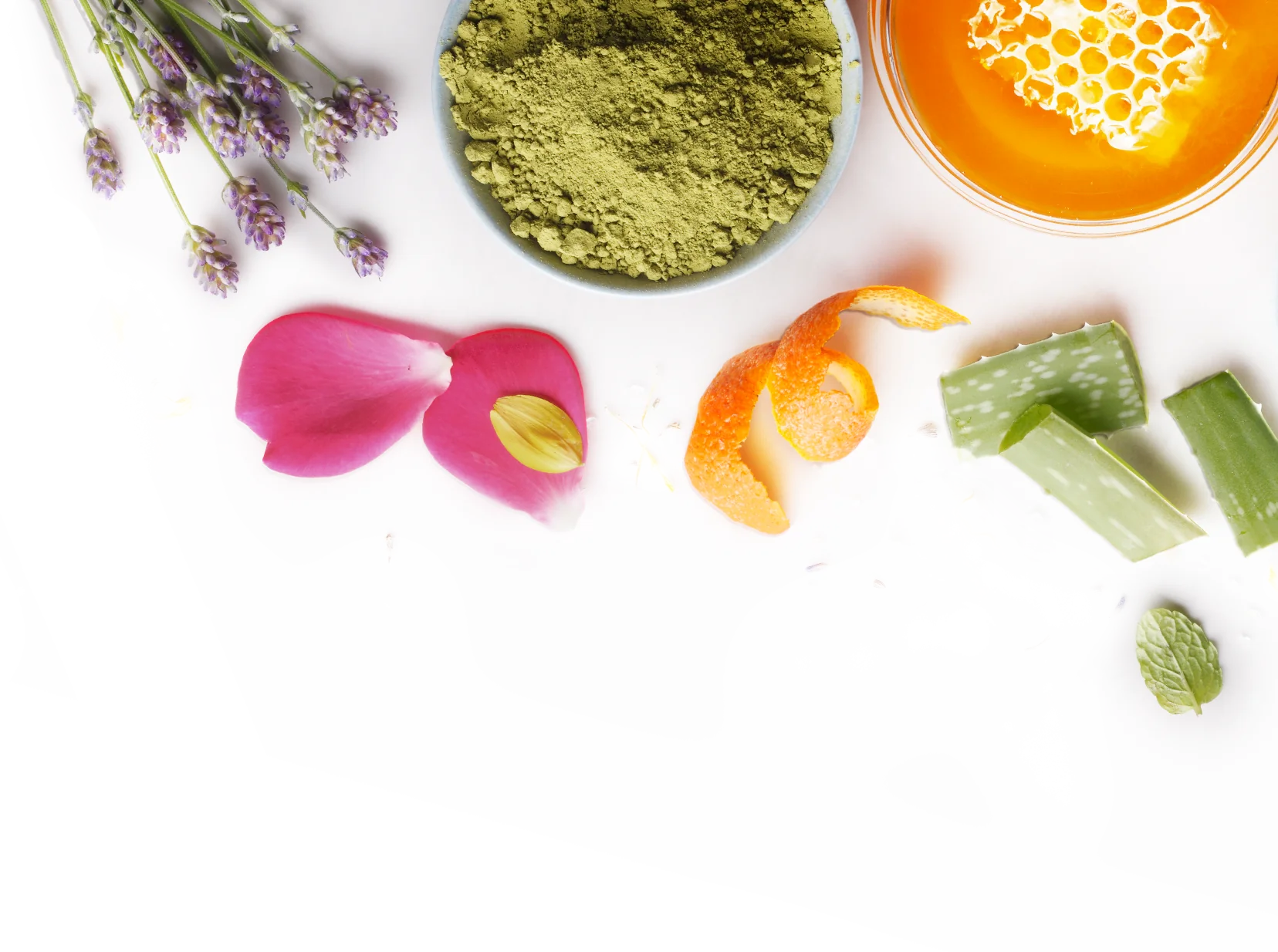
Effective, Feel Good Ingredients
The goal is simple: to Harness the Power & Simplicity of Nature® to cleanse, soothe, heal, and protect your skin and hair!
Our unique formulas rely on moisturizing oils and butters, healing botanicals, and pure essential oils. We choose every ingredient with one end-result in mind….the BEST possible natural skin care for YOU!
Featured Ingredients


Organic Pumpkin Seed Oil
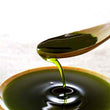
Organic Tamanu Oil
All Ingredients:
Organic Sunflower Oil infused with Organic Botanicals Calendula, Plantain, Elder Flowers, Marshmallow Root, Mullein & St. John's Wort
Organic oils are unrefined and have not been bleached or deodorized. These oils retain their natural scent, color, and nutritional benefits.
Frequently Asked Questions
What is My Skin Type?
Your skin is as unique as you are.
If you think about it, your skin type is not even the same for all of the areas of your body.
The skin on your face is different from the skin on your hands, which is different from the skin on your back which is different from the skin on your feet ...etc.
Although your skin type is determined by genetics, it will also be affected by other factors and can change with time.
Understanding your skin type is a good starting point before trying or switching to natural products.
There are typically five types of healthy skin: normal, dry, oily, combination, and sensitive.
NORMAL SKIN
This skin is balanced, neither too dry nor too oily. It has regular texture, no imperfections and a clean, soft appearance, and does not need special care.
OILY SKIN
Oily skin is the result of excessive secretions of sebum, an oily secretion of the sebaceous glands. Oily skin tends to attract more dirt and dust than dry skin and may be prone to blackheads, acne, and excessive shine. It is frequent in adolescents and often seen with acne or blemish-prone skin.
DRY SKIN
For some people dry skin is caused by external factors such as the weather, low air humidity, sun, or hot showers, and it is often temporary.
However, for others it may be a lifelong condition. Dry skin is a result of a decrease in natural oil production which often results in skin that is flaky and has a rough appearance. Dry, cracked skin is often prone to skin disorders, such as eczema.
 SENSITIVE SKIN
SENSITIVE SKIN
Truly sensitive skin easily reacts to external stimuli. The skin is often fragile, thin or fine-textured, dry, and prone to allergic reactions.
Sensitive skin often feels uncomfortable, tight, red or itchy. It is a delicate skin that needs a lot of TLC.
COMBINATION SKIN
Combination skin is just what is sounds like, it has characteristics of both dry and oily skin. The area with more oil is usually the T- zone (forehead, nose, and chin), while the skin on the cheeks is normal or dry.
For more information on skin type and help with product recommendations for your individual needs, please read our blog, What's Your Skin Type?
View Answer Page
Why Should I put OIL on my face?
Whether you call them "face oils" or "facial serums," nourishing, unrefined organic oils can moisturize, soothe and help restore natural balance to facial skin.
Our skin naturally loses the ability to retain moisture as we age. Our facial skin tends to become thinner and lose its elasticity. Our skin also produces less oil, which means it dries out more easily. This can exaggerate the look of fine lines and wrinkles. Facial oils can help prevent water loss and keep skin plump.
 Application Hint: Apply facial oil right after washing skin and right before any other moisturizer to hold the water on the skin and seal in moisture.
Application Hint: Apply facial oil right after washing skin and right before any other moisturizer to hold the water on the skin and seal in moisture.
While many people, especially those with oily or acne-prone skin tend to shy away from oil-based moisturizing, it can be a very important step in daily skin care. An organic facial oil helps to increase the moisture content in the skin and prevent further moisture loss.
Oily Skin
If you have oily skin, nourishing organic oils can help mimic the natural skin sebum which in turn sends signals to oil-producing cells that say, "Hey my skin is moisturized so stop producing oil."
Using products created to "dry out" oily skin, in an attempt to get rid of oily shine, will actually trigger the oil glands to increase oil production, which only exacerbates the oily skin problem. A wholesome moisturizer helps balance skin oil production.
Dry Skin
If you have dry skin an organic facial oil made from unrefined botanical oils creates a protective but breathable barrier that slows moisture evaporation and thus helps lock in moisture.
Irritated Skin
A natural face oil is ideal for sensitive and irritated skin. Sometimes, adequate hydration alone can help calm inflammation and soothe red irritated skin.
Maturing Skin
It is especially important for those (like me!) with maturing skin to keep your face adequately moisturized to help with fine lines and wrinkles. As we age, the skin's natural oils decreases, the skin dries out more easily and wrinkles appear deeper. A nourishing oil helps prevent water loss and plump the skin.
The main thing is to make sure that you are using the right kind of moisturizer.
The most nourishing face oils are those made with unrefined, certified organic plant-based oils. Unrefined oils are either cold-pressed or expeller-pressed.
They are minimally processed without chemicals under temperature-controlled conditions which ensures a nutrient-rich, high-quality natural oil.
USDA Certified Organic means the botanical oils are free of synthetic additives, pesticides, and preservatives.
Stay away from petroleum-based products that contain mineral oils that clog your pores and cause breakouts.

Creating A Facial Skin Care Routine
What Is A Facial Cleansing Oil? How Do I Use It?
View Answer Page
Are Chagrin Valley Ingredients & Products USDA Certified Organic?
Chagrin Valley Soap & Salve is a USDA Certified Organic Company

The most important consideration in any business is its customers. Today's world of misleading claims, false advertising, and simple deception, often leaves consumers trying to discover the truth about personal products and their ingredients.
- We want our customers to know that we are committed to transparency in everything we do.
- We want our customers to know that when we say "organic," we mean it.
- We believe that in becoming a USDA Certified Organic company, our customers do not have to wonder if we really use certified organic ingredients or if our organic products are truly organic.
- So we choose to be a certified organic company and abide by the strict standards required for organic certification.
Some of my favorite products are made with ingredients that just do not exist as certified organic. Why? At this time there are no standards created for ingredients specifically used in the personal care product industry. Organic certification of personal care products is based on the organic food standards set by the National Organic Program of the USDA.
But since we are a certified organic company, we are required to submit documentation that even our "non-organic ingredients" were produced without the use of toxic pesticides, genetically modified organisms (GMOs), sewage sludge, or irradiation.

Why Did We Become a Certified Organic Company?
What Do All of the Organic Labels Mean?
View Answer Page
Do Chagrin Valley Natural Skincare Products Contain GMO's?
Chagrin Valley Soap & Salve is a USDA Certified Organic company.
We are required to submit documentation that ALL of our ingredients, even our "non-organic ingredients," were produced without the use GMOs.
Since the U.S. National Organics Program forbids the use of genetic modification in products to be certified as organic, purchasing organic is a great way to lower your exposure to GMO’s.
Genetically Modified Organisms refers to any animal, plant or microorganism that has been changed in a lab at the gene level. It is also known as “genetic engineering."
Read more about "Non-GMO Skin Care Ingredients"
View Answer Page
